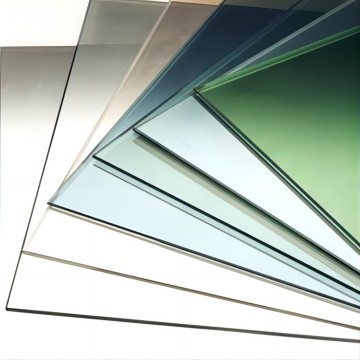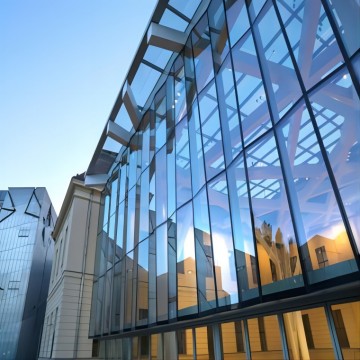Name:Ella He
Phone:+8618189802192
Cell:+8618189802192
Address:The Free Trade Port Area, Yangpu Economic Development Zone, Danzhou, Hainan, P.R.China

Description:
Low Emissivity (Low-E) glass provides excellent performance in situations where temperature separation is desired. Low-E is used to help meet energy efficiency requirements by blocking UV light and providing heat insulation. This is done with a special thin-film metallic or oxide coating which prevents the passage of short-wave solar energy and also prevents long-wave energy produced by heating systems and lighting from escaping.
Wallkingdon offers three types of low-E coated glasses: Single silver Low-E /Double silver Low-E / Triple silver Low-E.

Specification:
=Thickness: 3 mm -19 mm
=Sizes: 1830*2240mm, 2134*3300mm, 2250&3300mm, 2440*3300mm, etc.
=Coating types: Online coating and offline soft coating
=Offline Low-E glass types: Single silver high transmittance, single silver high shading, and Double silver, etc.
=Standard: CHINA GB/T18915.1-2002; UK BS6206:1981; USA ANSIZ97.1; AUS AS/NIS 2208-1996
Low-E Coating Performance Measures:
Low-E coatings are applied to the various surfaces of insulating glass units. Whether a low-E coating is considered passive or solar control, they offer improvements in performance values. The following are used to measure the effectiveness of glass with low-E coatings:
=U-Value is the rating given to a window based on how much heat loss it allows.
=Visible Light Transmittance is a measure of how much light passes through a window.
=Solar Heat Gain Coefficient is the fraction of incident solar radiation admitted through a window, both directly transmitted and absorbed & re-radiated inward. The lower a window’s solar heat gain coefficient, the less solar heat it transmits.
=Light to Solar Gain is the ratio between the window’s Solar Heat Gain Coefficient (SHGC) and its visible light transmittance (VLT) rating.
Here’s how the coatings measure up by minimizing the amount of ultra-violet and infrared light (energy) that can pass through glass without compromising the amount of visible light that is transmitted.

Applications:
=Home doors and windows
=Building curtain wall
=Cars, Trucks and Buses windows
Advantages:
Low-E glass sounds like it could be a useful tool for your home, but why should you spend the extra money? When your windows have Low-E glass installed, you’ll gain the following benefits:
=Furnishing protection:One use of Low-E glass is filtering out harmful UV light. UV light not only damage your health, but also harms your furniture, causing fabrics to fade and deteriorating the quality of materials and flooring.
=Improved window durability: The added layer in your window, although thin, will allow for extra durability, reducing chances of scratching or breakage.
=Increased energy efficiency:With Low-E glass, your home will have added insulation, which will result in less heat transference from your interior to the outside. The reduction of heat loss will improve energy efficiency throughout your home. These low-emissivity windows can reduce energy losses by 30 to 50 percent.

Copyright @ 2025 Wallkingdon Technology (Yangpu) Co., Ltd. All Rights Reserved